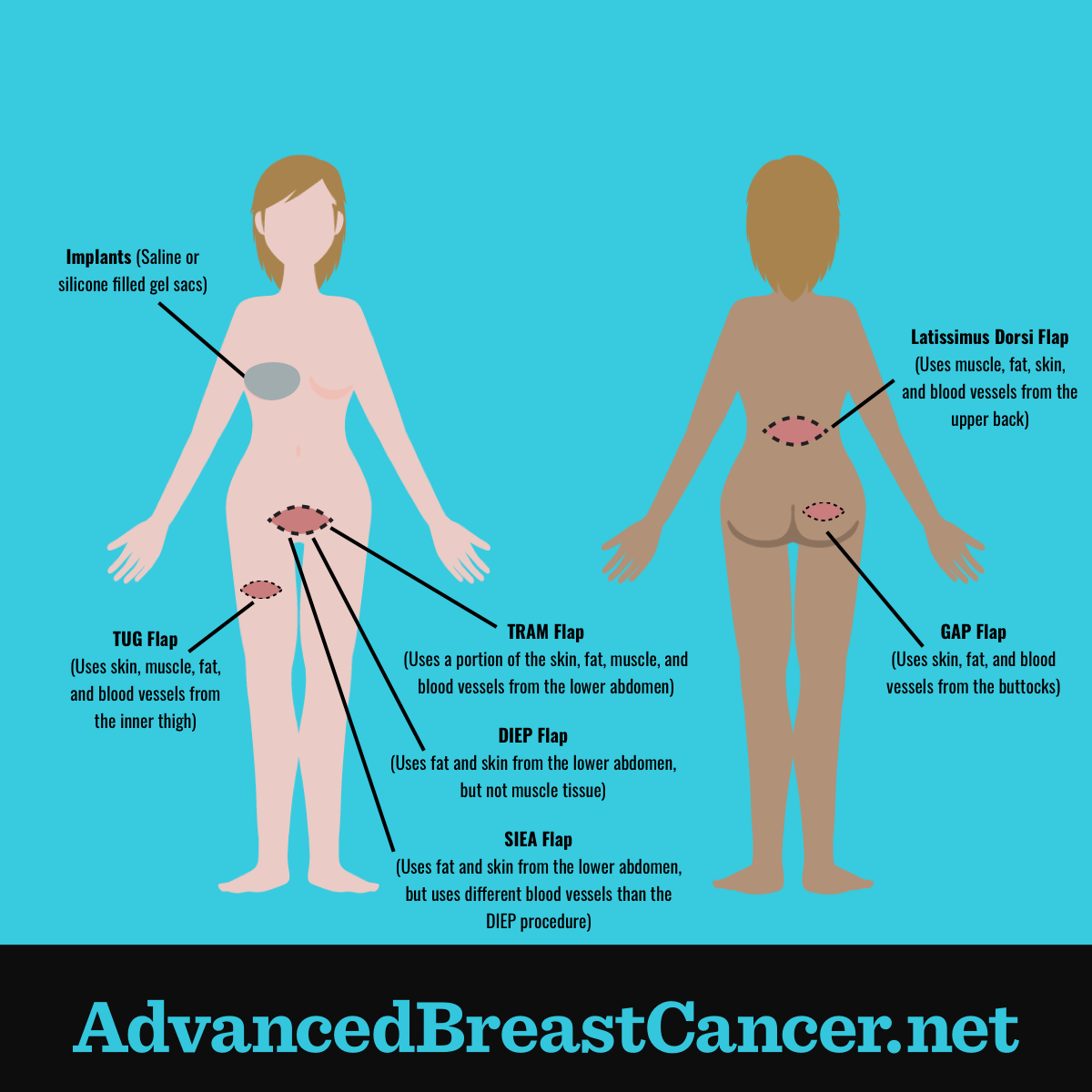Reconstructive Surgery
Reviewed by: HU Medical Review Board | Last reviewed: July 2025 | Last updated: August 2025
Reconstructive surgery is a type of plastic surgery that is used to rebuild the shape of the breast tissue. It may be performed at the time of the initial breast cancer surgery. Or, it may be delayed months or years after the initial surgery.1
In some cases, reconstruction may take multiple procedures. Regardless of when the reconstructive surgery occurs, it is best to consult with a plastic surgeon before you have surgery for breast cancer, if possible.1
When is reconstructive surgery used for advanced breast cancer patients?
Reconstructive surgery may be an option for people who have had a mastectomy, as well as those who have had a lumpectomy. While lumpectomy is a breast-conserving procedure, some people may not feel comfortable with the appearance of their breast after lumpectomy and may benefit from reconstructive procedures. Reconstructive surgery following a lumpectomy may also be called oncoplastic surgery.2
Breast reconstruction may help a person feel better about their body’s appearance after breast cancer. It can also eliminate the need for an external prosthesis. While reconstructive surgery does typically cause scars, newer techniques help reduce scars.1
People who are considering reconstructive surgery should talk to their surgeon about what to expect. While breast reconstruction procedures have advanced, a reconstructed breast will not look and feel exactly like a natural breast. The sensation of a reconstructed breast also differs from a natural breast.1
Reconstructive surgery after mastectomy
There are 2 categories of reconstructive surgery procedures:3
- Implants
- Flap procedures
With implants, the implant itself makes up the breast mound. Implants may be silicone or saline. Flap procedures use tissue from another part of the person's own body to reconstruct the breast mound. In certain cases, a combination of implant and flap procedures may be used.3,4
Flap procedures for breast reconstruction
Flap procedures use tissue from other parts of the person's body to construct the breast mound. Flaps may be free or pedicled.5,6
Free flaps are procedures in which the tissue is lifted from 1 area of the body and reattached to the chest. The blood vessels from the flap tissue must be reattached to the blood vessels in the chest. Pedicled flap procedures use a tunneling approach. This allows the blood vessels to remain connected to the original location and move the other tissues to create the breast mound.5,6
Flap procedures include:5,6
- TRAM (transverse rectus abdominis muscle) flap, which uses a portion of the skin, fat, muscle, and blood vessels from the lower abdomen
- DIEP (deep inferior epigastric perforator) flap, which uses fat and skin from the lower abdomen, but not muscle tissue, to help form the breast mound like a TRAM flap
- SIEA (superficial inferior epigastric artery) flap, which also uses fat and skin from the lower abdomen, but different blood vessels than the DIEP procedure
- Latissimus dorsi flap, which uses muscle, fat, skin, and blood vessels from the upper back
- GAP (gluteal free) flap, which uses skin, fat, and blood vessels from the buttocks
- TUG (transverse upper gracilis), or inner thigh flap, which uses skin, muscle, fat, and blood vessels from the inner thigh
Figure. Breast reconstruction options
Other procedures that may be used in reconstruction include:4,5
- Fat grafting – Removing fat from the buttocks, thighs, or abdomen via liposuction and injecting it into the breast area
- Nipple or areola tattooing
- Nipple and areola reconstructive surgery
- Nipple prosthetics
Often, a combination of these approaches may be used to create a breast that looks similar to the original breast.4,5
Reconstructive surgery after lumpectomy
If a person is not satisfied with the cosmetic appearance of their breast following a lumpectomy, breast reconstruction can help restore the breast shape. Breast reconstructive techniques that may be used after a lumpectomy include:2
- Implants
- Fat grafting
- Flap procedures
Procedures to increase symmetry
In cases where only 1 breast was affected by breast cancer, plastic surgery may be performed on the unaffected breast to increase symmetry. As the new breast is reconstructed using implants or flap procedures, the healthy breast may be reduced or lifted to improve the symmetry and overall cosmetic appearance of both breasts.3
